Six ways to make mind-maps more effective for learning
Mind-maps are a great way to learn, but there are a few things you can do to make them even more effective. Here are six ways to improve your mind-mapping skills.
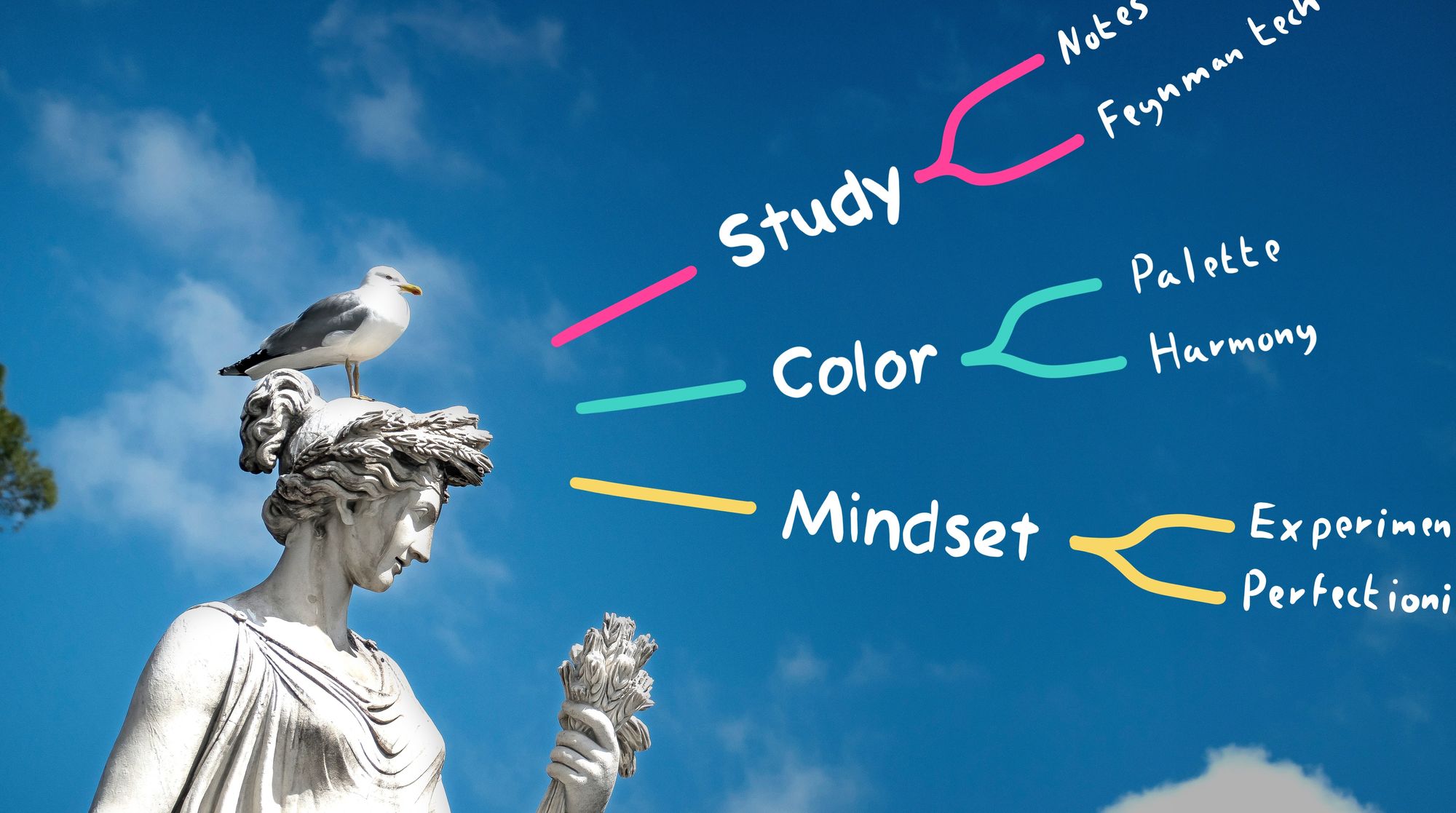
In our fast-paced, constantly-connected world, it's more important than ever to know how to learn effectively. And while there are a variety of ways to do this, mind mapping is one of the most powerful and versatile tools out there.
Mind maps are a helpful tool for learning and organizing information. They can improve memory and understanding by visually representing concepts and their relationships.
In this article, we'll explore how to use mind maps to learn more effectively.
1. Use the Feynman technique on your mind-map
The Feynman Technique is a great way to learn more deeply about a topic, and mind maps serve as a great overview of your topic to use as the basis for the Feynman Technique.
To use the Feynman technique, you start with a big idea, then break it down into smaller ideas, just like we do with our mind-maps. But then, to deepen your understanding, for each small idea, you try to come up with a simple explanation. Once you understand the small ideas, you can put them back together to understand the big idea better.
Here are the three basic steps:
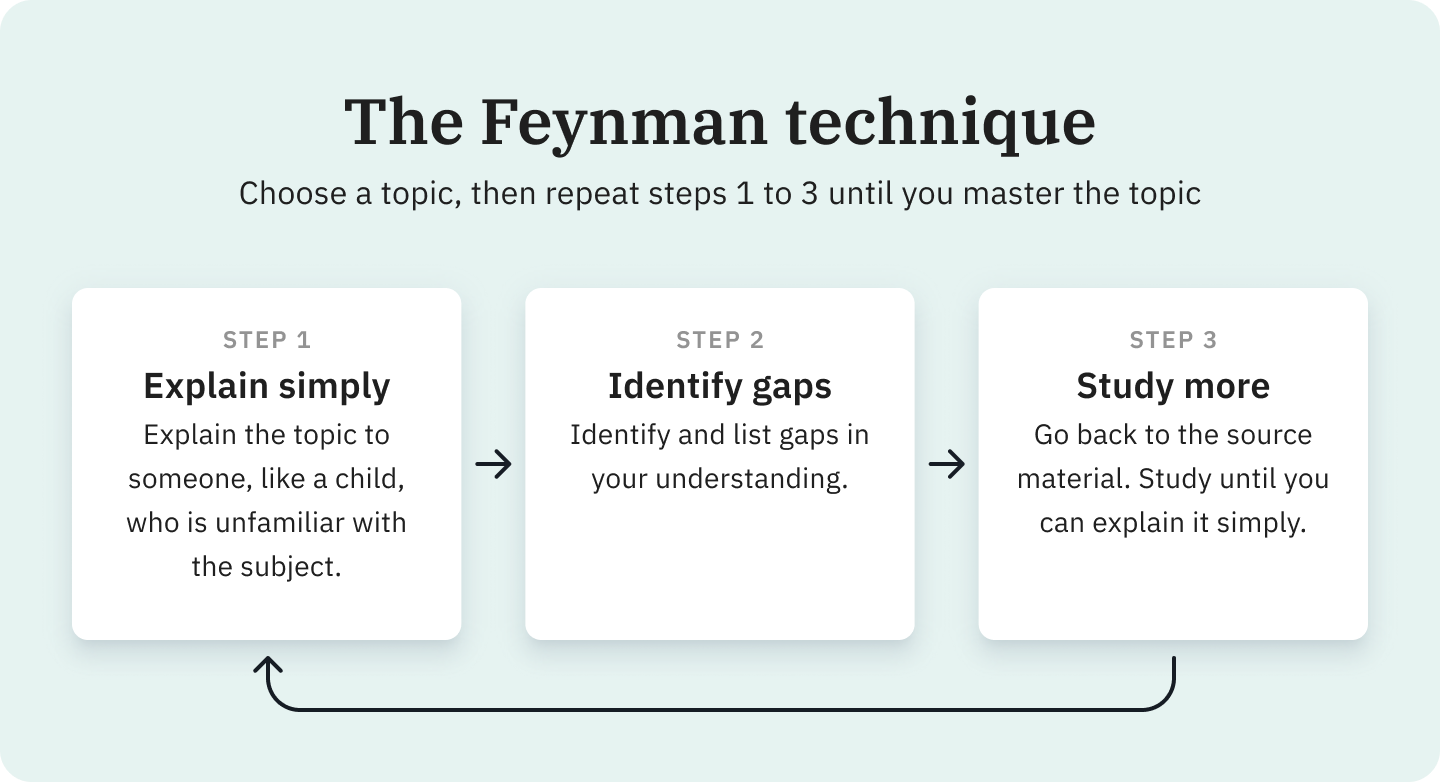
How to use the Feynman technique in your mind map
Here is how you can use the Feynman technique in your mind maps.
Step 1. Add a note to a sub-topic, and explain the topic to someone like a child that is unfamiliar with the topic.
Step 2. See if there are any parts of the topic that you don't understand. It can be helpful to write these down as questions. That way, when you do step 3, your research will be more focused.

Step 3. Return to literature (books, articles, websites, etc.) and try to fill in the gaps in your understanding. As you find helpful resources, attach them directly to the relevant sub-topic so you can easily find them again later.

Repeat the steps until you feel like you know the topic really well, and then you move on to the next topic.
2. Rate topics by well you know them
If you want to keep track of how well you know a topic, it's a good idea to give yourself a rating. This way, you can easily see which topics you need to review more and which topics you feel comfortable with.
For example, you could use a scale from one to five, with one being the least confident and five being the most confident, like this:

- 🟡 = You know the basics
- 🟡🟡 = You can do it
- 🟡🟡🟡 = You're decent at it
- 🟡🟡🟡🟡 = You're pretty good at it
- 🟡🟡🟡🟡🟡 = You're awesome at it
In Emberly, topic ratings are built-in. But if you're using another mind map tool, you can use emojis instead.
3. Use a harmonious color palette to learn better
If your mind-map is pretty to look at, you'll feel better while you're working with it. And studies have shown that when something looks nice, it makes people feel positive emotions which can help them learn better.
The difference in colors can make a big impact. For example, here are two mind maps that look different because of the colors used.
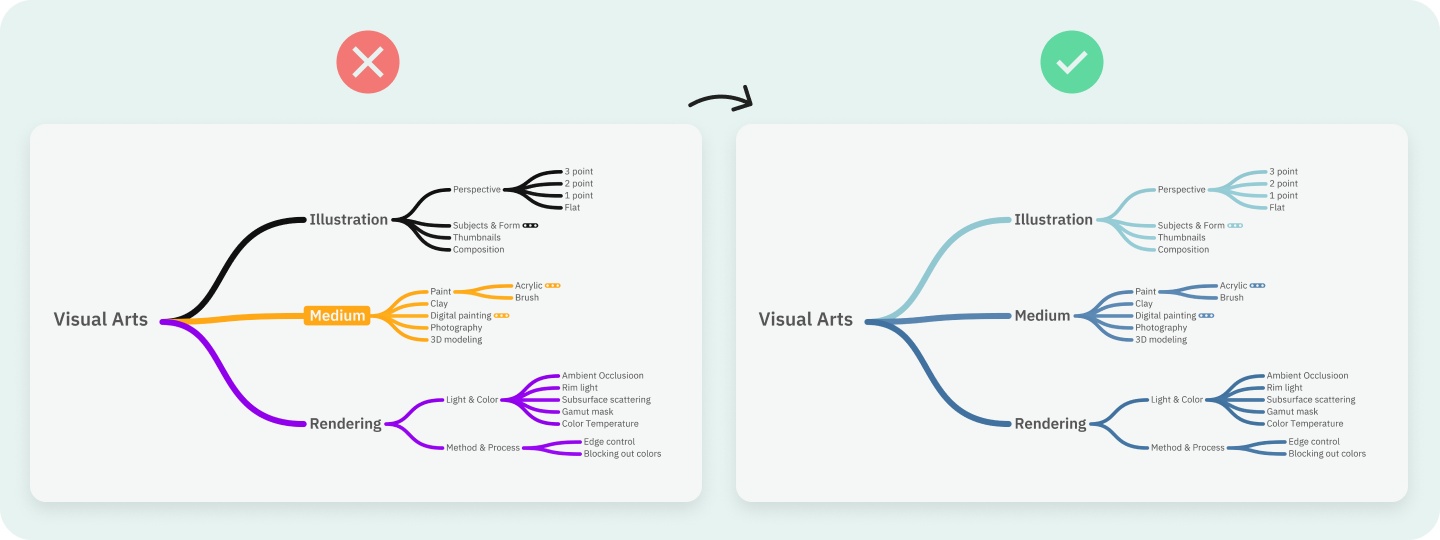
The color of your branches in a mind map does not have to be very visually distinct. That will only create visual noise and make it unpleasant to view. To easily achieve a more harmonious look, we can use closely related colors.
How to choose a simple and pleasing color scheme
Follow these steps if you want your color scheme to be simple but still pleasing.
- Step 1: Choose the primary color.
In my case above, I choose blue. But any color will do fine. However, I recommend avoiding yellow since making a good-looking map with that color is tricky. - Step 2: Use variations of this color for different branches.
Once you have chosen the primary color, choose slightly darker and lighter versions of that primary color for each branch.
👌 Tip - Don't choose too dark colors.
When choosing colors for a map, it is important not to make the branches too dark. This is because the labels need to be the main focus, and the branches should just be connecting them. If the branches are too dark, it is harder for your eyes to scan the labels quickly.
Inspiration
If you want some inspiration for harmonious color palettes, here's a great resource:
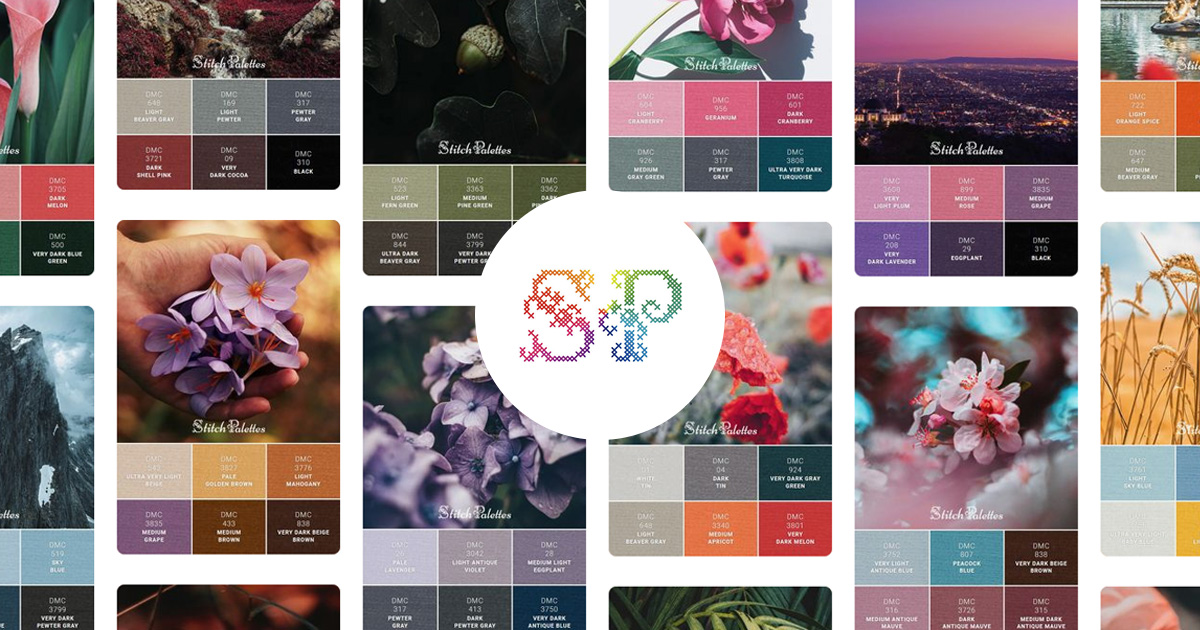
4. Don't worry about perfection.
If you're worried about being perfect, you're actually making it harder for yourself. When you focus on being perfect, you get overwhelmed and stressed, making it harder to learn and be creative.
Perfection is something you can never actually reach, but it's important to keep it in mind as a goal. This means that you should focus on making small improvements instead of being overwhelmed by the idea of perfection.
When it comes to mind maps, this means shifting focus from focusing on a fixed outcome (the perfect map) to focusing on an incremental goal (making the map better).
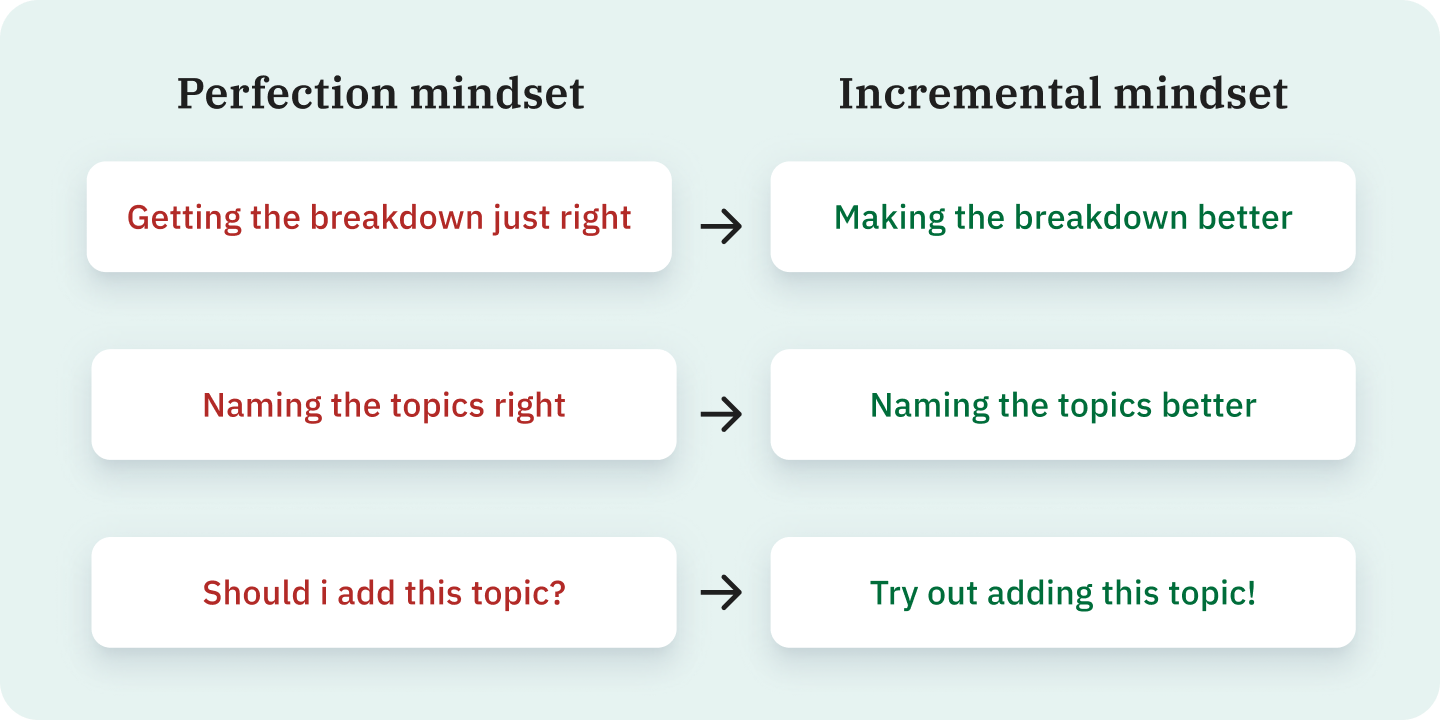
My experience from hundreds of hours making mind-maps is that the best way to learn is by experimentation. It's better to do something and change it later than worry about getting things perfect.
5. Mind maps are never finished
Learning is something you do all the time. It's never finished. Every time you understand something new, or something you already knew in a different way, that's learning.
This also goes for mind maps. They show what you understand about a topic right now. But as you learn more, your mind map will have to change to match your new understanding.
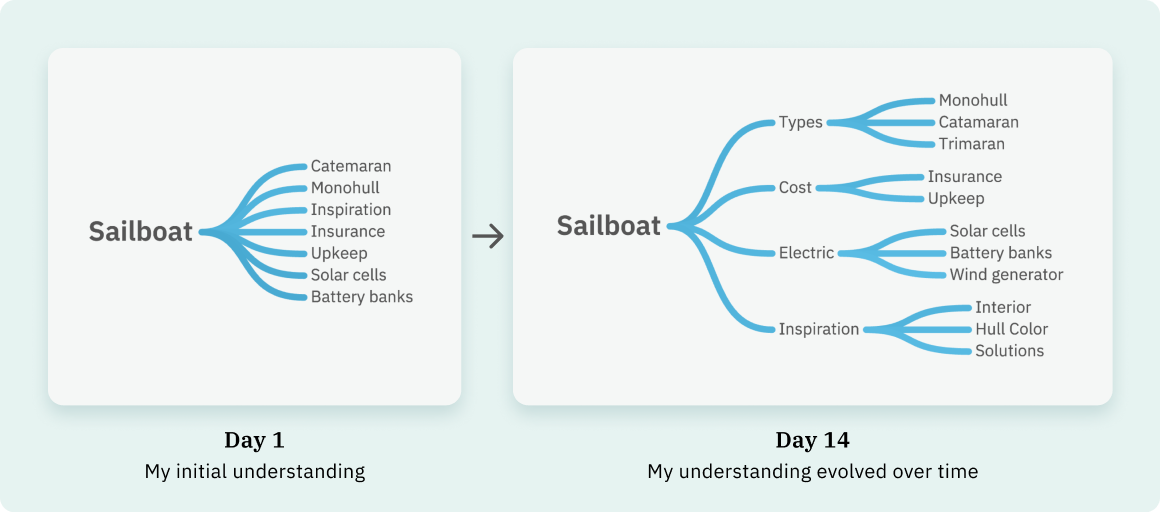
This means that your mind map is never complete and that's okay! You can always add to it and change it as you learn new information. This takes the pressure off of having to finish it and makes it more enjoyable.
It's an advantage to use a digital mind map. Because then you can rearrange the topics as you go as your understanding of the topic changes.
6. Let yourself explore
When you're trying to learn about something, there will be times when you feel unsure of where to put a sub-topic. Don't worry; this just means you've found a gap in your current understanding of the topic. This gap is an excellent opportunity to do some targeted research to figure out how this sub-topic fits into the big picture.
Whenever I notice these gaps, I can't help myself but follow my curiosity and research the internet until I am satisfied with knowing where to put it.
For example, the other day, I was trying to learn about birds, and I wasn't sure where to put the swan. I wondered if it was a seabird. But after a quick trip to Wikipedia, I found out that swans are actually water birds. And sea birds are just a sub-group of water birds. (By the way, did you know that swans are related to ducks and geese?)
Thank you for reading! If you're looking for more tips on how to learn better using mind maps, be sure to check out our discord community. We've got a great group of people who are always happy to help out and share their own tips and tricks.


